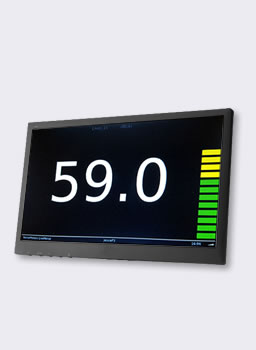
All the indoor LiveNoise Terminals come with an HDMI output, which can be connected to a standard computer monitor or TV. If you have an older monitor that does not have an HDMI input then you can use an HDMI to VGA converter. Please ask us for more details if you are not sure what you need.
You will need an HDMI cable (not included) to connect between the LiveNoise Terminal and your monitor.
With a USB keyboard plugged in you can set up the display to show the levels and charts that you need. A keyboard borrowed from a computer should be fine, as it doesn't need to be left connected once you have completed the setup.
All the indoor noise monitors have this. The only unit that does not have an HDMI output is the LNT-SE Weatherproof Noise Monitor. HDMI is included with:
Even if you do not want a large sound level display, connecting to an HDMI monitor and USB keyboard is the easiest way to configure the network settings.



The LiveNoise output will work on either a computer monitor or a TV, as long as it has a suitable HDMI connection. Older VGA monitors can also be used with an HDMI to VGA adapter.
All the indoor versions of the LiveNoise Terminal and LiveNoise Noise Monitors (not the outdoor LNT-SE) have an HDMI port to connect to a computer monitor or TV.
If you have a computer monitor with an HDMI input, which most modern monitors do, then all you need to connect up is an HDMI cable.
The connector on the LiveNoise Terminal is the standard HDMI Type A.
For a large (or very large) display of the sound levels, most modern televisions have an HDMI input.
All you need is a standard HDMI cable with a standard Type A connector for the LiveNoise Terminal and the correct connector for the TV - also usually a Type A.


If you have an old VGA monitor looking for a purpose then it may be perfect for the job.
You will need an adapter, similar to the Sowtech one in this image.